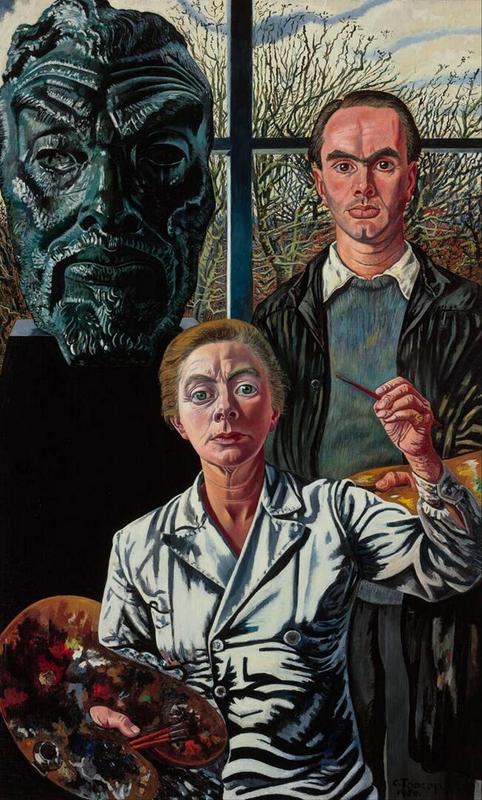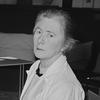More about Three Generations

Contributor
Charley Toorop’s Three Generations conveniently leaves out the fact that she had two other children.
Toorop didn’t play favorites, but if she did it would definitely be her eldest son Edgar, nicknamed “Eddy,” who is depicted here with the butt chin to end all butt chins. She saw him as the artistic heir to the Toorop throne established by her father, Jan Toorop. Unfortunately her other son, John, was just a filmmaker and even worse, her daughter wasn’t even a creative. This was definitely Charley’s fault though because for most of her daughter’s life, Charley left her with her grandmother, Charley’s mother, Annie. Eddy was the favorite and Charley did stuff to prove it like painting this giant portrait of him.
The sculpture behind Charley is of Jan Toorop. Unfortunately he had already died by the time Toorop thought to make this piece so she had to use a sculpture of him by John Raedecker. It wasn’t as good as the real thing but it captured the legacy vibe she was going for in this work. This painting was made in the midst of World War II, during which Toorop had to face her own mortality. Because of that feeling of impending doom, Toorop was intent on finishing the piece ASAP. It turns out that when you think you might die at any moment, your productivity spikes. Toorop was so desperate to finish that she took some huge risks for the cause. At one point during the war, she was forced to evacuate and took with her several of her paintings, this one being one of them. But soon she realized that she wanted to finish the piece in her own space so she smuggled the painting, a mirror, and an easel past Nazi soldiers and into her studio. This was both very badass and very stupid. Soon the Germans figured out what she was up to so she bailed, figuring that if they found her then they would probably take the portrait from her. She didn’t finish the piece until after the war, but when she did, it was everything that she wanted it to be.
The setting of the painting is her studio, because the thing that binds the three figures together is art. The wintry trees outside indicate the frigid environment of the war while she was creating this work. The window pane is a cross that connects Eddy to both his grandfather and his mother. Toorop wrote of this aspect of the piece that she “nailed them to the cross,” just like a good Catholic mother is wont to do. This is seen as one of Toorop’s most incredible works, and with good reason as it took her nine years of dodging death to finish it.
Sources
- "Drie Generaties - Museum Boijmans Van Beuningen." Museum Boijmans Van Beuningen. Web. 24 Oct. 2018. https://www.boijmans.nl/collectie/kunstwerken/3665/drie-generaties
- "Drie Generaties (Three Generations) By Charley Toorop." Curiator. Web. 24 Oct. 2018. https://curiator.com/art/charley-toorop/drie-generaties-three-generatio…
- Rembert, Virginia Pitts. "Charley Toorop." Woman's Art Journal26, no. 2 (2005): 26-32. doi:10.2307/3598095. https://www-jstor-org.libproxy.newschool.edu/stable/3598095?sid=primo&o…











